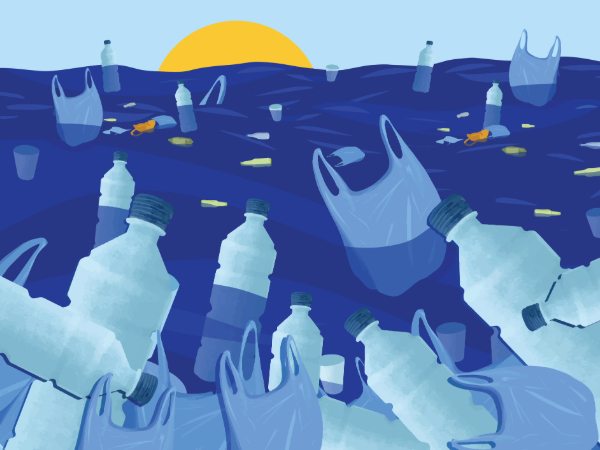
“Breaking the Plastic Wave: Top Findings for Preventing Plastic Pollution,” a report published several years ago by the Pew Charitable Trusts and SYSTEMIQ, Ltd., predicted that with “business as usual,” ocean plastic pollution would triple by 2040. That would be the equivalent of dumping 110 pounds of plastic into the ocean from every yard of shoreline worldwide. And plastic in our oceans doesn’t biodegrade; it breaks down into ever smaller pieces, eventually becoming microplastics that are found on the surface, in the water column, and on the sea floor, as well as in the stomachs and tissues of marine animals and in the human food chain.
Changes to reduce the plastic wave
While offering this dire prediction, “Breaking the Plastic Wave” also outlined changes that could dramatically lower this number, identifying eight strategies that could reduce the flow of plastic into our oceans by 80% by 2040. All of the strategies are based on existing technologies. These include:
- reducing growth in plastic production and consumption
- substituting some plastics with alternatives, such as paper and compostable materials
- designing products and packaging for recycling
- expanding waste collection rates (especially in middle- and low-income countries)
- increasing and improving recycling
- reducing plastic waste exports
In addition to improving ocean health, adopting the changes outlined in the report could generate savings of $70 billion for governments by 2040, relative to business as usual; reduce projected annual plastic-related greenhouse gas emissions by 25%; and create 700,000 jobs. Keeping plastics out of our oceans could also improve the lives and health of people living near oceans, as well as tourists. Additionally, cleaner oceans benefit businesses and local economies that rely on them for resources and revenue.
“There’s no single solution to ocean plastic pollution, but through rapid and concerted action we can break the plastic wave,” said Tom Dillon, Pew’s senior vice president for environment and crosscutting initiatives. “As this report shows, we can invest in a future of reduced waste, better health outcomes, greater job creation, and a cleaner and more resilient environment for both people and nature.”
Here’s a link to the full report. More background is available in the peer-reviewed journal Science.
Image credit: Dusan Stankovic | Digital Vision Vectors | Getty Images
